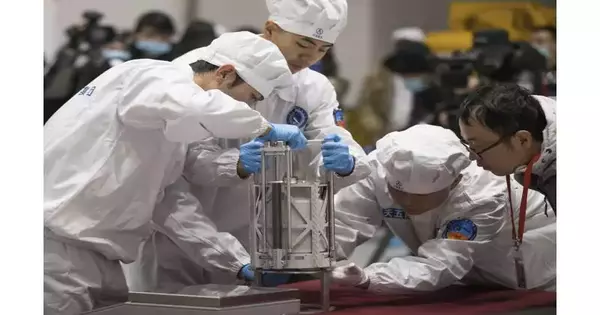In lunar samples from a Chinese mission, scientists have found a fresh and renewable source of water on the moon for upcoming explorers.
In the lunar soil where meteorite impacts take place, there was water embedded in tiny glass beads. Samples from China’s lunar mission in 2020 contained these gleaming, multicolored glass beads.
According to Hejiu Hui of Nanjing University, who participated in the study, the beads range in size from the width of one hair to several hairs, and the water content is only a tiny portion of that.
“Certainly, a plethora of glass beads will be required. On the other hand, there are numerous beads on the moon.”
Hejiu Hui of Nanjing University.
The team estimates that there are billions or trillions of these impact beads, which could equal large amounts of water, though extracting them would be challenging.
Yes, a ton of glass beads will be needed, Hui wrote in an email. On the moon, however, there are a ton of beads.
The solar wind’s continuous bombardment of hydrogen allowed these beads to continuously produce water. The results, which were released on Monday in the journal Nature Geoscience, were based on 32 glass beads that were randomly chosen from lunar dust brought back by the Chang’e 5 moon mission.
Hui said that more samples will be examined.
As the melted material ejected by incoming space rocks cooled, it formed the impact beads that are now dispersed throughout the universe. The beads could be heated, perhaps by upcoming robotic missions, to extract water. Additional research is required to determine whether this is feasible and, if so, whether the water is safe to drink.
This demonstrates that water can replenish itself on the surface of the moon. a fresh water source on the moon,” Hui declared.
Based on samples brought back by the Apollo moonwalkers more than 50 years ago, previous studies discovered water in glass beads created by lunar volcanic activity. These, too, might offer water, not just for use by upcoming crews but also for rocket fuel.
By the end of 2025, NASA hopes to return astronauts to the lunar surface. They’ll aim for the south pole, where it’s thought that the craters there are full of frozen water and are always in shadow.
More information: A solar wind-derived water reservoir on the Moon hosted by impact glass beads, Nature Geoscience (2023). DOI: 10.1038/s41561-023-01159-6. www.nature.com/articles/s41561-023-01159-6





